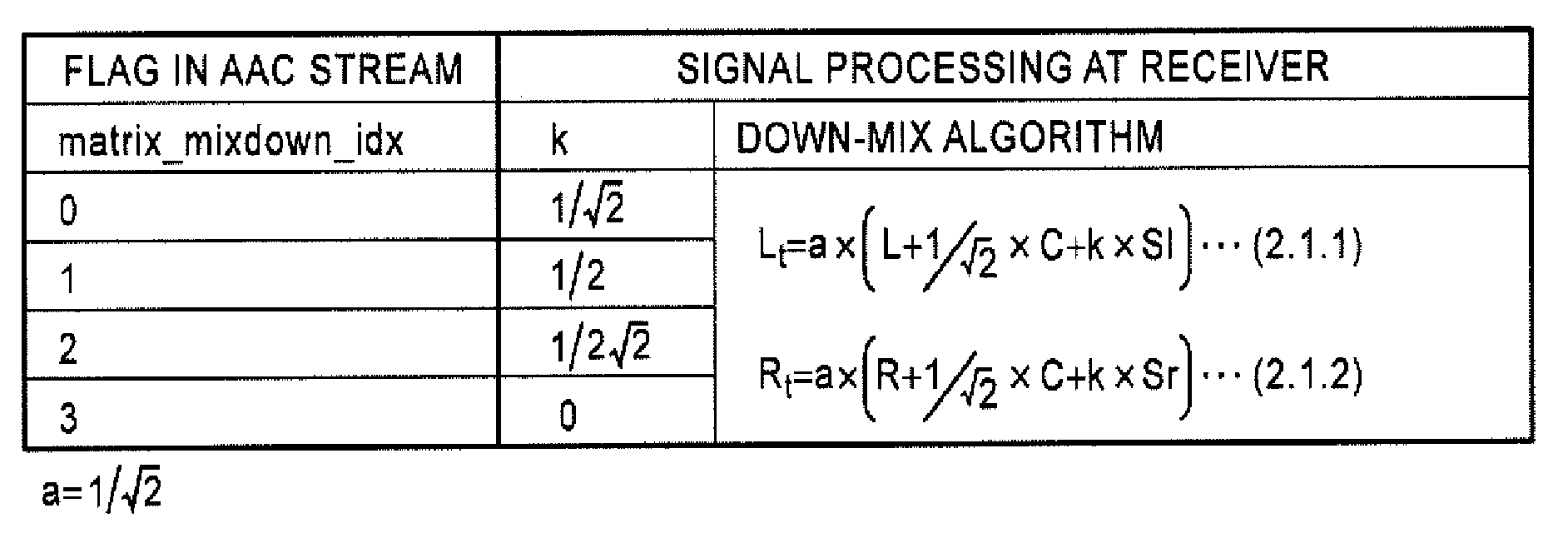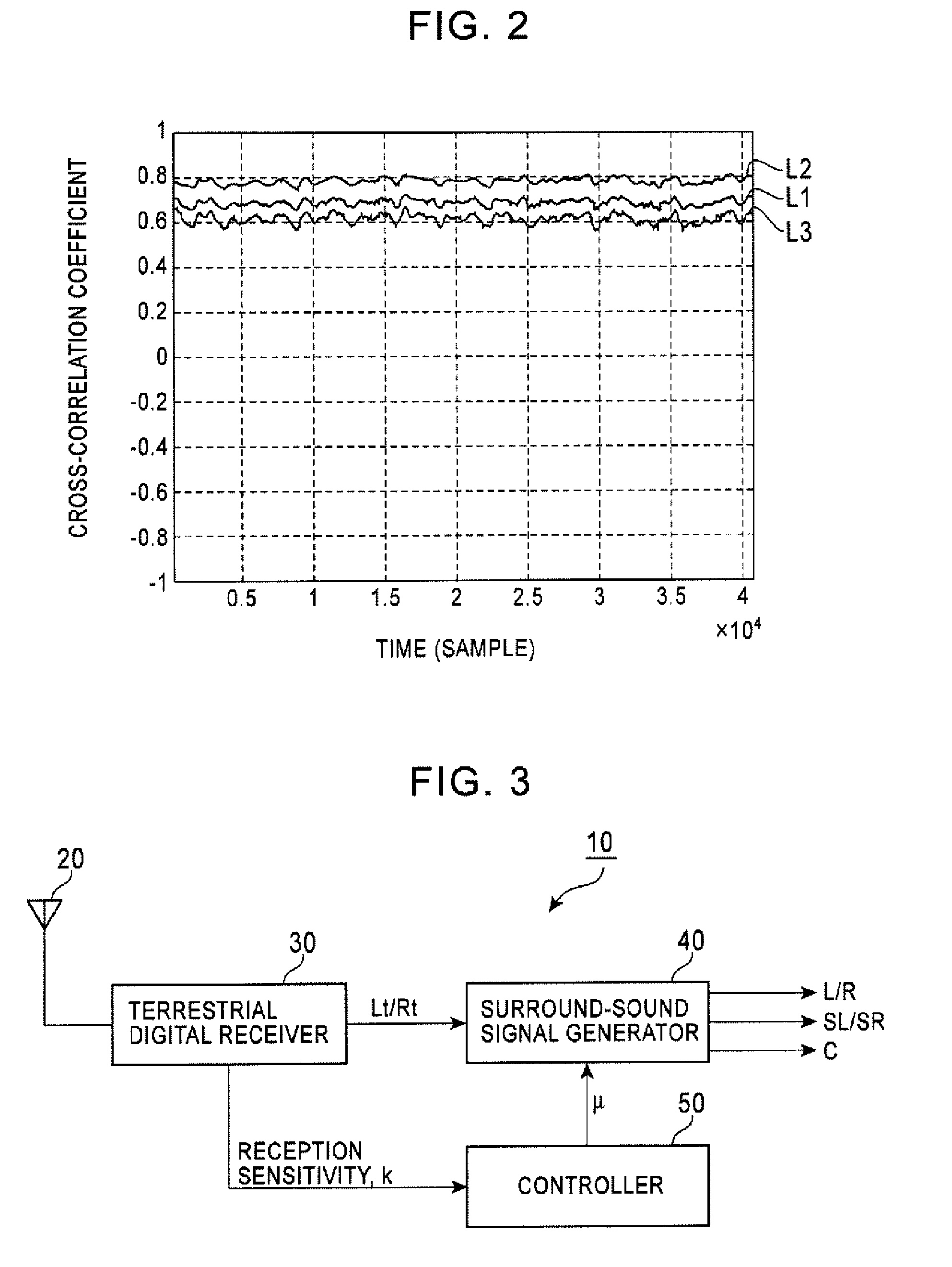Audio Apparatus
a technology of audio equipment and audio input, which is applied in the direction of instruments, stereophonic arrangments, pseudo-stereo systems, etc., can solve the problems of large-scale change in the audio system, the difficulty of maintaining 5.1-channel full-segment reception,
- Summary
- Abstract
- Description
- Claims
- Application Information
AI Technical Summary
Benefits of technology
Problems solved by technology
Method used
Image
Examples
first embodiment
[0041]FIG. 3 is a block diagram showing the configuration of an audio apparatus according to the present invention. A vehicle-mounted audio apparatus 10 includes an antenna 20, a terrestrial digital receiver 30, a surround-sound signal generator 40, and a controller 50. The antenna 20 receives terrestrial digital broadcast. The terrestrial digital receiver 30 receives RF (radio frequency) signals received by the antenna 20. The surround-sound signal generator 40 receives audio signals sent from the terrestrial digital receiver 30 and generates surround-sound signals 40. The controller 50 receives encoding information, such as the reception sensitivity of the terrestrial digital receiver 30 and a parameter k regarding a down-mix algorithm, and controls the surround-sound signal generator 40. The surround-sound signal generator 40 receives down-mixed 2-channel stereo signals Lt and Rt, and generates stereo signals L and R and surround-sound signals SL and SR therefrom. For generation ...
second embodiment
[0059]According to the present invention, the stereo signals Lt and Rt having highly-correlated components are mixed with the corresponding surround-sound signals SL and SR having low-correlation components to perform level adjustment. In particular, since the mixing ratio of the stereo signals Lt and Rt increases as the parameter k becomes smaller (i.e., as the cross-correlation coefficient becomes larger), it is possible to prevent a reduction in the output power of the surround-sound signals SL and SR.
third embodiment
[0060]the present invention will now be described. The third embodiment is a combination of the first embodiment and the second embodiment. That is, the controller 50 controls both the step-size parameter p for the adaptive algorithm processors 88 and 98 and the addition ratio for the addition processor 200 in accordance with the value of the parameter k.
[0061]FIG. 12 is a table showing one example of the relationship of the step-size parameter μ and the addition ratio. As shown in FIG. 12, for generation of the surround-sound signals SL and SR, the controller 50 reduces the step-size parameter μ and increases the addition ratio of the stereo signals, as the value of the parameter k decreases. For example, for the parameter k=1 / √2, the controller 50 sets the step-size parameter μ to 0.001 and performs control so that no stereo signals Lt and Rt are added to the surround-sound signals SL and SR. The set value is used as a reference value. As the parameter k decreases, i.e., the cross...
PUM
 Login to View More
Login to View More Abstract
Description
Claims
Application Information
 Login to View More
Login to View More - R&D
- Intellectual Property
- Life Sciences
- Materials
- Tech Scout
- Unparalleled Data Quality
- Higher Quality Content
- 60% Fewer Hallucinations
Browse by: Latest US Patents, China's latest patents, Technical Efficacy Thesaurus, Application Domain, Technology Topic, Popular Technical Reports.
© 2025 PatSnap. All rights reserved.Legal|Privacy policy|Modern Slavery Act Transparency Statement|Sitemap|About US| Contact US: help@patsnap.com



